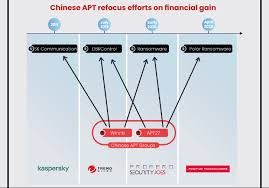Security Incident Response (SIR) is essential for analyzing and managing cyber threats effectively. One of the most powerful features of this module is its reporting capability, which helps analysts and executives quickly understand the scope and impact of incidents. If you’re exploring how to set up report templates effectively—especially in light of findings like the timeline snippet from the FireEye Mimikatz report—this guide is for you.
The Importance of Report Templates in Incident Response

Report templates in Security Incident Response allow teams to create structured summaries of incidents. These templates can be tailored to provide insights either at an analyst level or at an executive level, similar to how detailed threat timelines—such as the timeline snippet from the FireEye Mimikatz report—highlight the chronology of intrusion events.
Preconfigured Report Templates in Security Incident Response
Security Incident Response in the Yokohama release offers pre-built templates designed to streamline reporting. These include:
Analyst Status Reporting
A detailed, in-depth overview of a security incident, aimed at technical analysts who need to understand the full context, similar to the detailed breakdown seen in the timeline snippet from the FireEye Mimikatz report.
Executive Summary
A high-level snapshot for stakeholders and decision-makers. This format helps communicate the threat’s status and business impact without delving into technical specifics.
Note: These templates are in draft and read-only mode by default. To customize them, you need to duplicate and modify the templates before publishing.
How to Create a Custom Report Template
To design your own report—such as one that includes a detailed timeline snippet from the FireEye Mimikatz report—follow these steps:
- Navigate to Security Incident Response > Report Templates.
- Click Create New.
- Choose the type: Analyst Summary or Executive Summary.
- Use available incident fields to configure your report.
- Save and publish the template.
This setup allows for repeatable, shareable reporting across incidents.
Using System Properties to Control Report Output
Security Incident Response also offers system properties that govern how reports are generated and displayed. These can help customize the appearance and content formatting—ideal when trying to mirror threat timelines like those found in the FireEye Mimikatz report.
Duplicating an Existing Report Template
Rather than starting from scratch, you can duplicate a default template to serve as the basis for a new one:
- Go to the desired template.
- Click Duplicate.
- Modify the copy according to your needs—perhaps adding elements found in the timeline snippet from the FireEye Mimikatz report.
Editing a Report Template
To reuse an existing template and tailor it for another purpose:
- Select the template you wish to edit.
- Update fields and layout.
- Save and re-publish the modified template.
This is especially useful if your security team frequently works with threat reports that include chronological attack data, like the timeline snippet from the FireEye Mimikatz report.
Why the FireEye Mimikatz Report Matters
The timeline snippet from the FireEye Mimikatz report gained attention because of its clear documentation of how attackers leveraged Mimikatz to steal credentials and move laterally within a network. When configuring templates in SIR, using such timelines as reference can dramatically improve how information is presented to both technical and non-technical audiences.
Conclusion
Leveraging features like report templates in Security Incident Response helps organizations standardize the way they present incident data. Whether you’re creating an executive summary or a deep-dive analyst report, referencing structures like the timeline snippet from the FireEye Mimikatz report ensures your templates are insightful and actionable.
FAQs
What is the purpose of using report templates in Security Incident Response?
Report templates help present consistent and structured incident data, allowing teams to communicate technical and business impacts effectively.
Can I edit the default templates?
No, default templates are read-only. You must duplicate them before making edits.
How does the FireEye Mimikatz report relate to SIR report templates?
It provides a real-world example of how to document incident timelines clearly, which can guide how you build your own report templates.
What’s the difference between an analyst and an executive report?
Analyst reports contain detailed, technical information, while executive reports focus on high-level summaries relevant to decision-makers.
Can I use incident fields to customize templates?
Yes, you can format the report using various incident-related fields such as time, source, affected systems, and more.




